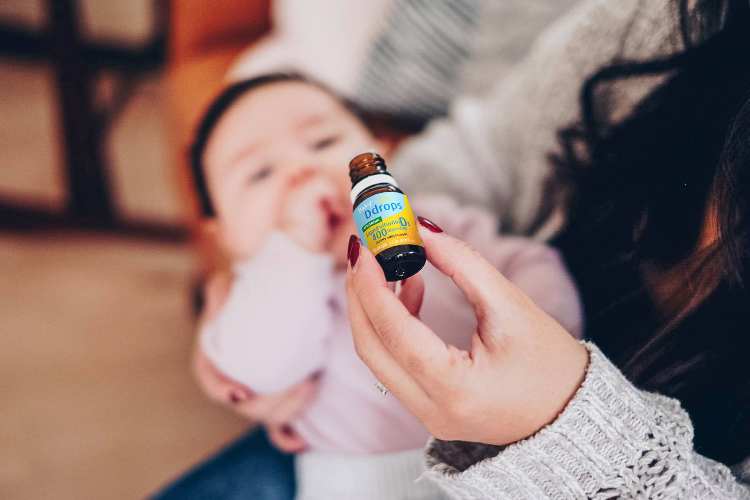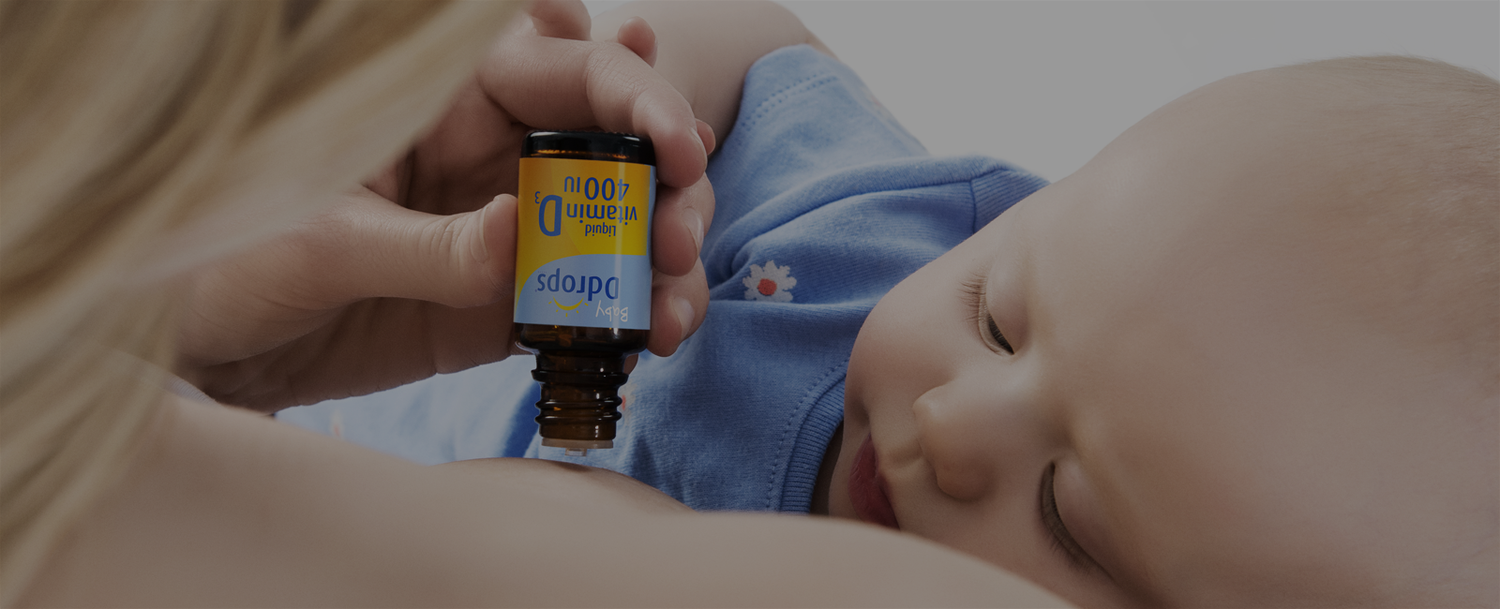October 26, 2017
Breastmilk is recognized as the ideal source of nutrition for infants. With more research about breastmilk, multiple studies show that breastmilk of today’s modern women usually lacks the amount of vitamin D required by a growing baby.[1,2] Many believe that this is not specifically a problem with breastmilk, but more of a reflection of the way we live in an industrialized modern world.
Knowing that vitamin D is critical for a baby’s growing bones (both while in the uterus and after birth), mothers ask themselves the following questions: How is it possible that breastmilk lacks only vitamin D? What can I do to make sure that my breastfed baby gets the appropriate amount of vitamin D?
How is it possible for breastmilk to lack vitamin D?
It all starts with the mother’s direct sun exposure, diet, and her stores of vitamin D. These will determine how much vitamin D will be contained in her breastmilk. Here’s the catch – most women of childbearing age do not have sufficient vitamin D for their own bodily needs during pregnancy and lactation. This is an international problem. For example, 45 per cent of African American women have a vitamin D deficiency.[3] Many people don’t get the amount of exposure to the outside sun-like generations before us, therefore we are getting less vitamin D as a result. Since the mother is usually lacking vitamin D in her own body, only a very tiny fraction of what is needed for the baby finds its way to her breastmilk. This amount is typically not even close to being enough to meet the baby’s needs.
To make things even more complicated, the small amount that is in the breastmilk is not the vitamin D precursor known as 25(OH)D, but rather the actual vitamin D molecule itself. What normally happens in our bodies is that the precursor 25(OH)D goes through a transformation in our blood system and becomes the beneficial vitamin D molecule. It may sound like a good thing for the final vitamin D product to be in breastmilk, but in fact, it is not ideal because the final vitamin D molecule has a much shorter lifespan than its precursor, with a half-life of 12-24 hours instead of 2-3 weeks for the precursor.[4] Therefore, the small amount of the vitamin D molecules that gets transferred into the breastmilk won’t be there for very long. This greatly reduces the breastfed baby’s opportunity to uptake vitamin D.
What can be done to ensure that a breastfed baby receives the required amount of vitamin D?
There are two options to consider.
First, since the vitamin D content of human milk is related to the lactating mother’s vitamin D status, the mother may decide to increase her own vitamin D levels to ensure that there is enough for herself and for her breastfed baby. The mother needs to take 4,000 to 6,400 IU of vitamin D per day, every day.[5] To put this in perspective, prenatal vitamins typically contain only 400 IU, which is significantly lower than this amount.[6]
The best and safest option is to give the baby a daily supplement of vitamin D. Health authorities worldwide, including the American Academy of Pediatrics, Health Canada, and the NHS in the UK all recommend that exclusively breastfed, healthy, term infants should receive 400 IU of vitamin D per day.[7,8,9] The Canadian Paediatric Society recommends that babies who live in northern Native communities should get 800 IU vitamin D per day during the winter months.[10]
Learn about Ddrops® liquid vitamin D products here.







ทิ้งข้อความไว้
เว็บไซต์นี้ได้รับการคุ้มครองโดย hCaptcha และมีการนำนโยบายความเป็นส่วนตัวของ hCaptcha และข้อกำหนดในการใช้บริการมาใช้